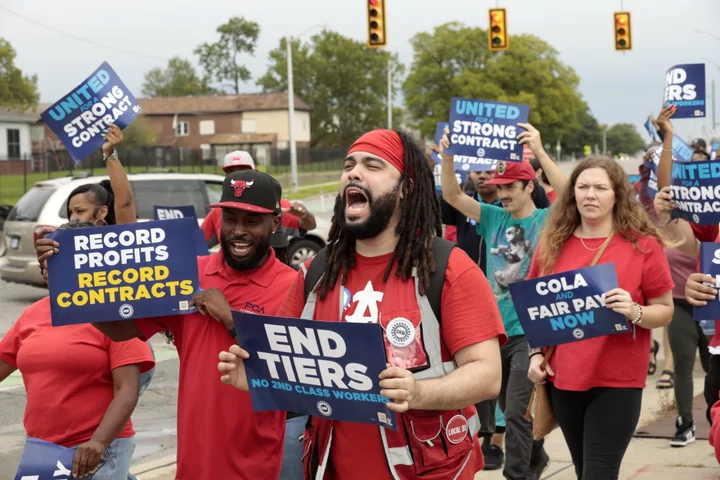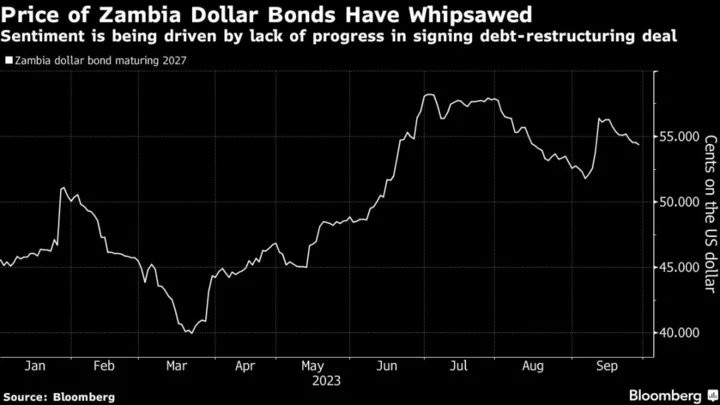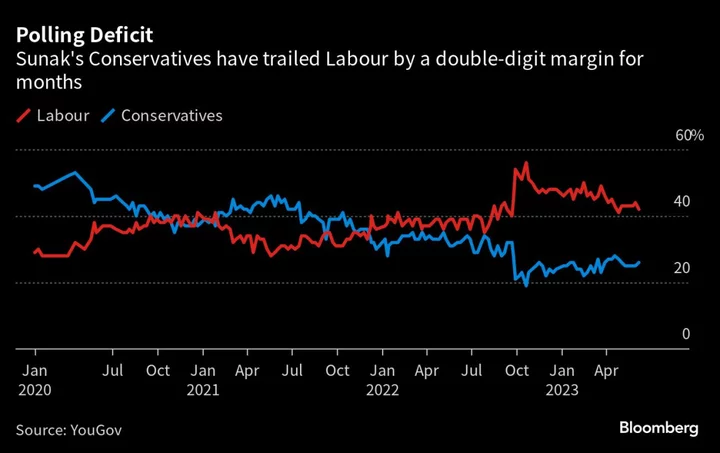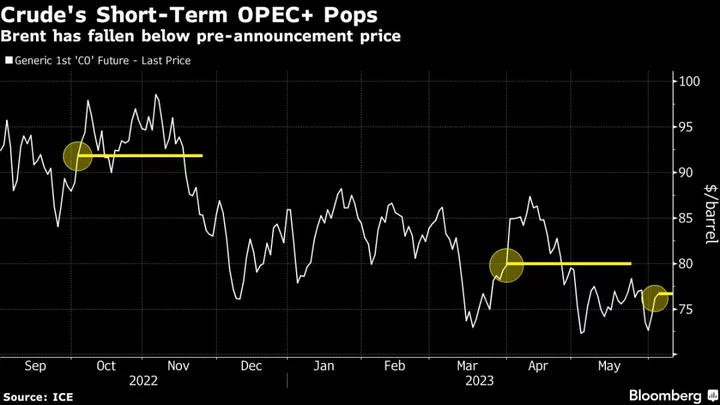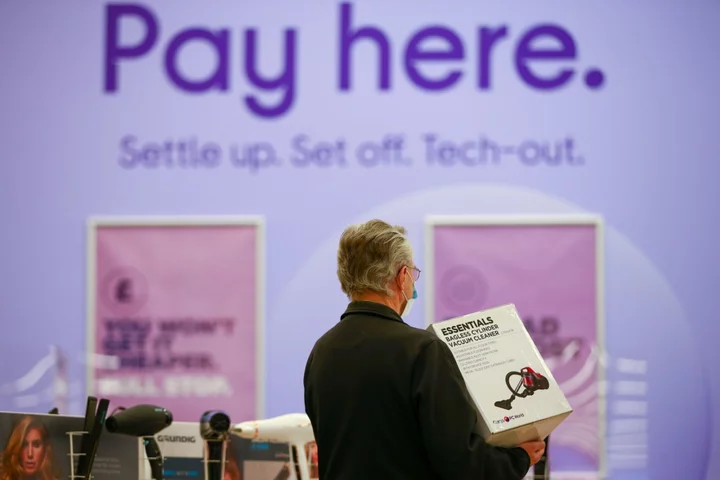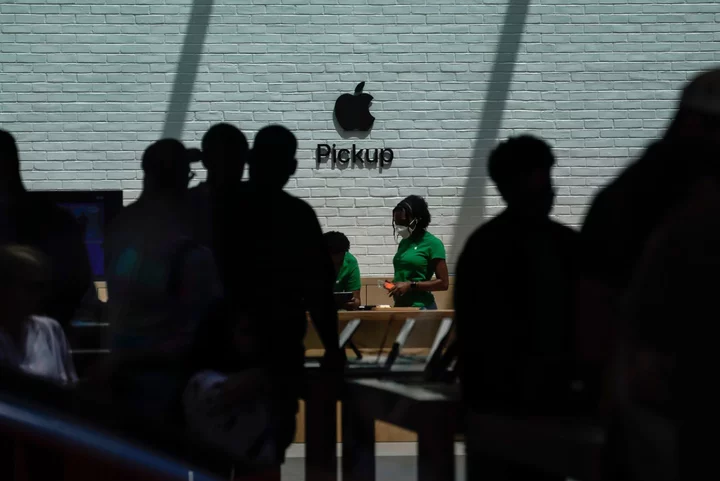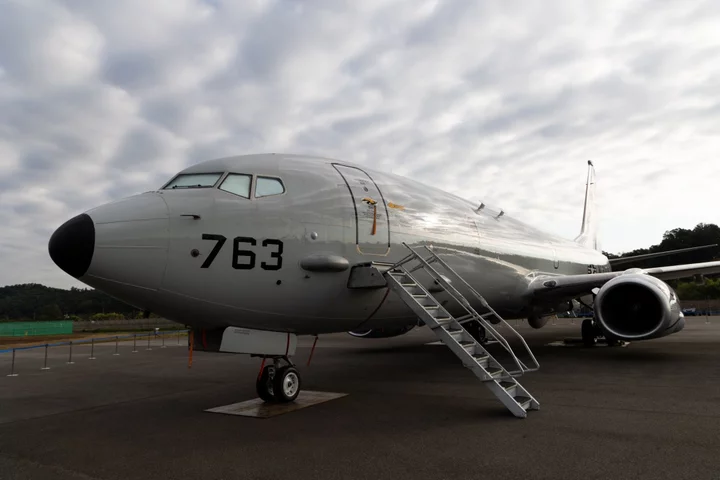The United Auto Workers began an unprecedented strike at all three of the legacy Detroit carmakers, kicking off a potentially costly and protracted showdown over wages and job security.
After the midnight deadline for a new contract passed, workers walked out on a Ford Motor Co. plant in Michigan that makes Bronco SUVs, a General Motors Co. factory in Missouri that assembles Chevrolet Colorado pickups and a Stellantis NV plant in Ohio that builds Jeep Wrangler SUVs. The union and automakers are still far apart after weeks of talks.
The strategy is designed to methodically cut production of profitable vehicles while minimizing the impact on the UAW’s strike fund. The union said it will add strike locations depending on how bargaining progresses.
“Tonight, for the first time in our history, we will strike all three of the Big Three at once,” UAW President Shawn Fain said late Thursday. “This strategy will keep the companies guessing. It will give our national negotiators maximum leverage and flexibility in bargaining. And if we need to go all out, we will. Everything is on the table.”
GM and Ford shares traded down more than 2% before the start of regular trading Friday in New York. Stellantis stock rose 0.5% as of 10:30 a.m. in Paris.
The UAW’s unusually broad attack comes amid a resurgence of labor activism in the US. Emboldened by tight labor markets and agitated by inflation and risks shouldered during the pandemic, unionized workers have notched a series of victories in the last year at some of the most prominent US companies, including major railroads and United Parcel Service Inc.
The automakers were quick to condemn the strike.
“We are extremely disappointed by the UAW leadership’s refusal to engage in a responsible manner to reach a fair agreement in the best interest of our employees, their families and our customers,” Stellantis said in an emailed statement. “We immediately put the company in contingency mode and will take all the appropriate structural decisions to protect our North American operations.”
GM said it’s offered the union an “unprecedented” economic package, including “historic” wage increases and manufacturing commitments. “We will continue to bargain in good faith with the union to reach an agreement as quickly as possible,” the company said.
Ford said the union’s has made “little movement” from initial demands, which the company warned would give an extra boost to non-union rivals Tesla Inc. and Toyota Motor Corp.
The first walkout will shut down plants that make popular and profitable models, but spares factories that produce cash cows like the Ford F-150, Chevy Silverado and Ram pickups. That leaves the union the option to make more damaging moves if the strike drags on.
The union said 12,700 workers at three plants will be part of the initial action. UAW members will get $500 a week from the union in strike pay.
The effects of the strike could ripple across the economy, with parts suppliers expected to be hit as production comes to a halt at the three plants — and potentially others.
“Small and medium-sized manufacturers across the country will feel the brunt of this work stoppage, whether they are a union shop or not,” the National Association of Manufacturers said in a statement. “American families are already feeling economic pressures from near-record high inflation and this will only inflict more pain.”
New Leadership
Fain, the UAW’s new reformist leader, is making a high-stakes bet that he can win back benefits forfeited during the financial crisis more than a decade ago. The union has about 150,000 members at the three automakers, and they’re eager to share in soaring corporate profits as car prices have surged in the four years since the last contract was signed.
The UAW’s initial list of demands was projected to cost each of the companies $80 billion over four years, according to people familiar with the companies’ estimates. Both sides have amended their offers as they hash out issues including pay raises, cost-of-living adjustments, pensions for newer workers and job security at select factories.
UAW workers currently start around $18 an hour and can work to a top rate of $32 an hour, while temporary workers start at around $15 an hour.
Fain, who became the UAW’s first directly elected president this spring, is trying to restore trust after a federal corruption probe sent two former UAW leaders to jail.
He’s among a new cohort of left-leaning labor reformers who see the old guard as out of touch and ineffective. Fain has struck a more adversarial tone with automakers than his predecessors while making negotiations more transparent by hosting regular bargaining updates on Facebook Live — at times theatrically tossing copies of the companies’ bargaining proposals in the trash.
Teamsters President Sean O’Brien used similar tactics earlier this summer to secure a 10% wage bump for UPS workers in year one of a five-year contract, with smaller guaranteed raises after that, while averting a strike.
A 40-day strike against GM in 2019 — the longest since the 1970s — cost the company about $3.6 billion in earnings before interest and taxes, according to RBC Capital Markets. The strike dented revenue up and down the automotive supply chain.
The UAW said Thursday that it has about $825 million in its strike fund.
--With assistance from Ian Kullgren and Keith Naughton.
(Updates with shares trading in the fifth paragraph.)

